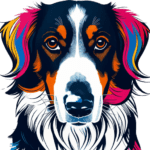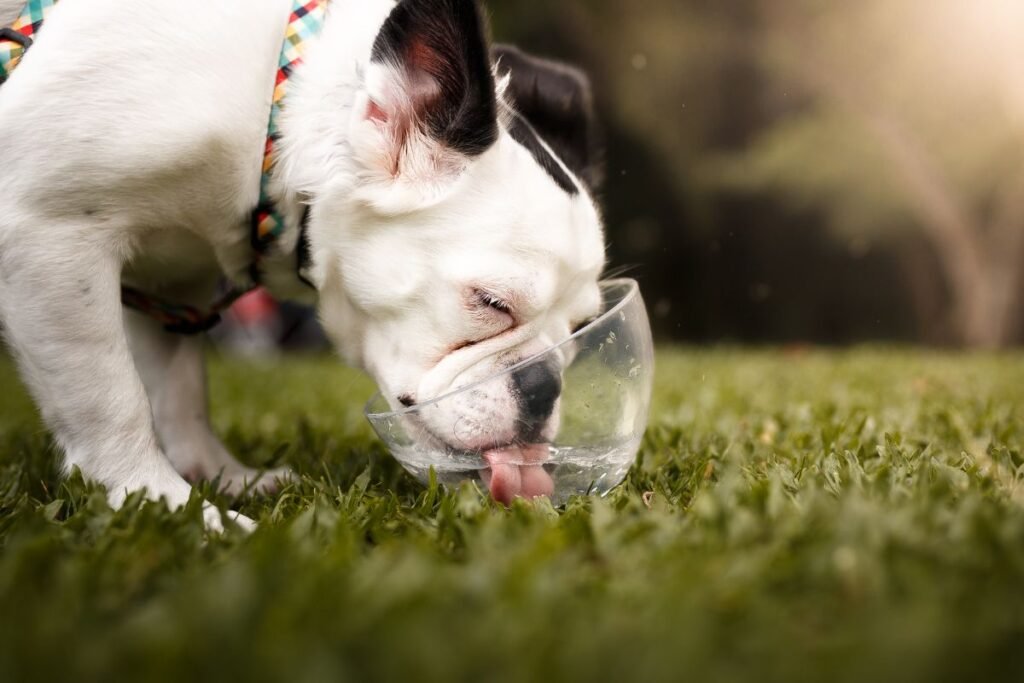If you’re reading this, chances are you have a furry friend who loves to run, play, and get their zoomies on. But did you know that after all that fun exercise, there’s a bit of a science to how we should handle their hydration? That’s right, giving your dog water after exercise isn’t as straightforward as just filling up a bowl. Let’s dive into the fun and fascinating world of post-exercise hydration for your four-legged buddy!
The Thirsty Pup
Picture this: your dog just finished a marathon session of fetch or a long hike. They’re panting like there’s no tomorrow, and all they want is a big gulp of water. But wait! Before you let them dive into the water bowl, let’s talk about why a little patience can go a long way.
Why Wait to Drink?
First off, let’s talk about why we don’t just hand them a bucket of water. For larger breeds or dogs with deep chests, think Great Danes or German Shepherds, gulping down water after heavy exercise can lead to something called bloat, or gastric dilatation-volvulus (GDV). It’s a scary condition where the stomach fills with gas, expands, and can even twist. Not fun at all!
The 5-10 Minute Rule
So, what’s the magic number? Experts suggest waiting about 5 to 10 minutes after exercise before letting your dog have a good drink. This gives their body a chance to cool down naturally, and it reduces the risk of bloat. During this time, you might want to engage them in a little light stretching or a slow walk to help them recover.
Small Sips to Start
Now, while we’re waiting, your dog might look at you with those big, pleading eyes. Give in a bit! Offer them a few small sips of water initially. This helps them cool down without overwhelming their system. Think of it like sipping tea – it’s soothing.
Hydration After 10 Minutes
After the 10-minute mark, you can let your dog drink more freely. But here’s the thing – encourage slow drinking. Dogs, like us, can overdo it and gulp down too much too fast. You can train them to drink slowly with commands or use a slow feeder water bowl.
Breed and Size Matters
Let’s not forget that every dog is different. For those big breeds prone to bloat, you might want to extend that wait time up to 30 minutes. Always ensure they have some water, but take it slow.
Food and Exercise
Here’s another tip: never exercise your dog immediately after they’ve eaten. Wait at least an hour. This helps prevent that dreaded bloat situation.
Signs to Watch For
While your dog is drinking, keep an eye out for signs of distress. Heavy panting that doesn’t subside, drooling, or discomfort could mean they’ve overdone it with the water. If these signs continue, it might be time to consult a vet.
Keep it Cool
And remember, when we say water, we mean cool water, not ice-cold. Cold water can shock their system or cause stomach cramps. Think of it like a refreshing drink on a hot day – not too cold but just right.
Hydration During Exercise
Now, let’s talk about hydration during exercise. In hot weather or during long play sessions, offer small amounts of water periodically. This keeps them hydrated and prevents overheating. It’s like having a water break during your workout – essential!
Consult Your Vet
Every dog is unique, and what works for one might not work for another. So, always chat with your vet about your dog’s hydration needs, especially if they have health issues. Your vet can give personalized advice that’s just right for your pooch.
Training Your Dog
Lastly, a little training can go a long way. Teach your dog to drink water slowly. Use commands like “wait” or “slow” when they’re drinking. Sometimes, a little distraction can help them take their time.
So, there you have it! The next time your dog finishes their exercise session, remember the magic 5-10 minute rule, offer small sips initially, and encourage slow drinking. Keep an eye on their breed, size, and individual needs. With these tips, you’re ensuring your pup stays happy, healthy, and hydrated without any unwanted drama. Cheers to healthy dogs, happy lives, and plenty of playtime!
Remember, hydration is just as important for dogs as it is for us. Let’s keep our furry friends safe and sound with every lap of water they take. Until next time, keep playing, loving, and learning with your canine companion!

Summary
How Long to Wait to Give a Dog Water After Exercise
Here’s a guideline on how long you should wait before giving your dog water:
Immediate Post-Exercise: Allow your dog to have a few small sips of water right after exercise to cool down. This helps prevent dehydration without overwhelming their system.
5-10 Minutes Wait Time
Wait for about 5 to 10 minutes after the exercise before letting your dog drink more. This gives their body time to start cooling down naturally. During this time, you might engage them in light stretching or let them walk at a slow pace to aid in recovery.
Hydration After 10 Minutes
After about 10 minutes, you can let your dog drink water more freely, but still encourage them to drink slowly. Small sips over time are better than gulping down a lot of water at once.
Consider Breed and Size
For larger breeds or dogs with deep chests, like Great Danes or German Shepherds, be especially cautious as they are more prone to bloat. A longer wait time of up to 30 minutes might be safer, but always ensure they have access to some water.
Avoid Exercise After Eating
- If your dog has eaten before exercise, it’s recommended to wait at least an hour
- before engaging in vigorous activity to prevent gastric dilatation-volvulus (GDV or bloat).
Post-Exercise Observations
- Monitor your dog for signs of distress like heavy panting, drooling, or signs of discomfort after drinking water. If these signs continue, it might indicate they’ve drunk too much too quickly, or there’s another issue.
Cool Water is Best
- Always provide cool, not ice-cold water. Cold water can cause stomach cramps or shock to the system.
Regular Hydration During Exercise
- In hot weather or during long sessions, offer small amounts of water periodically during exercise to keep them hydrated, especially if they show signs of fatigue or overheating.
Remember, these are general guidelines. Every dog is different. Consult with a veterinarian for personalized advice, particularly if your dog has health issues or if you’re unsure about their hydration needs. Train your dog to drink water slowly. Use commands or distraction techniques to ensure they don’t gulp down water in a rush.
Explore related topics
Check out our other posts for tips, tricks, and fun pet facts on our blog, and join our pet-loving community on Pinterest, Facebook, and Instagram. Let’s make every day an adventure for our furry friends!

